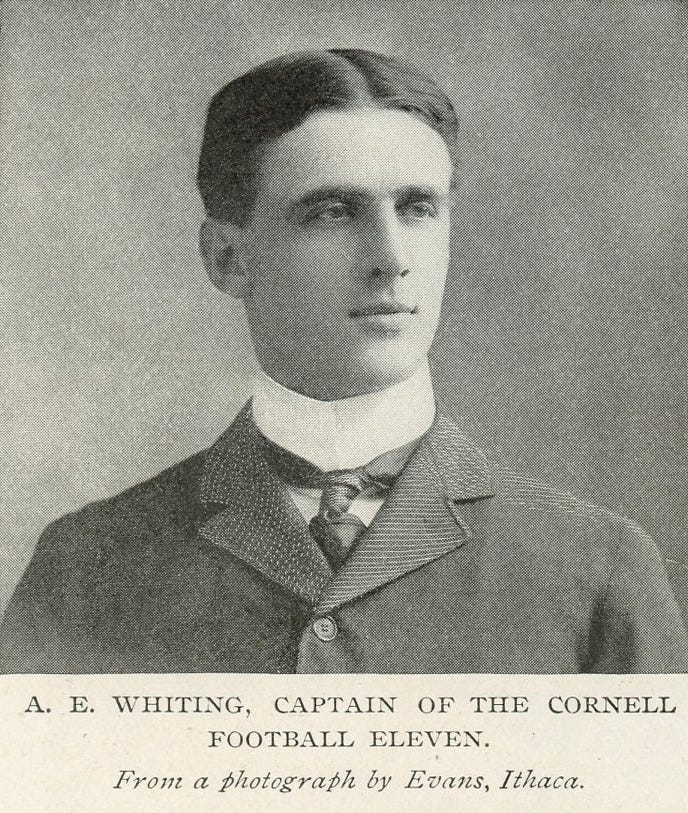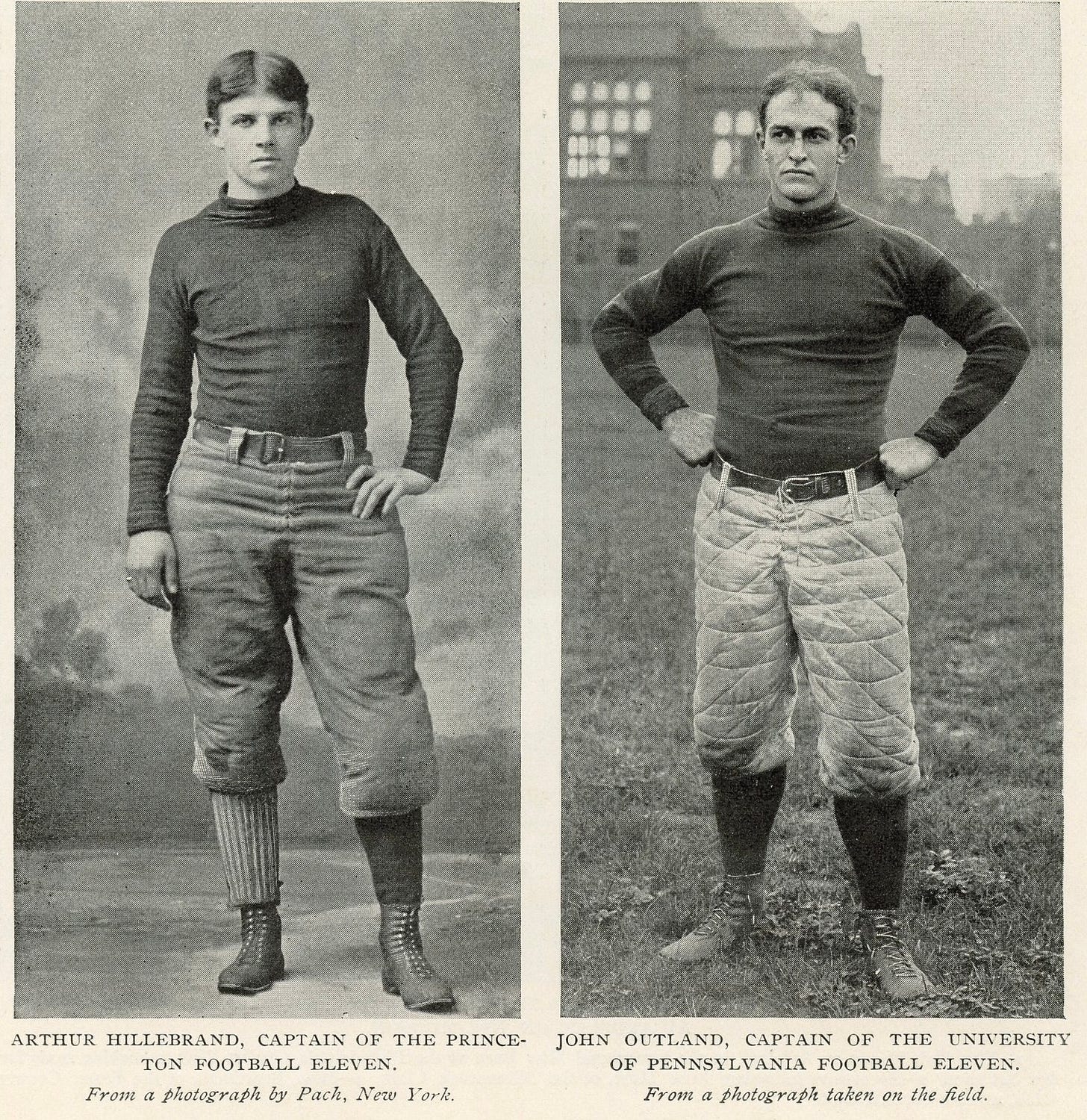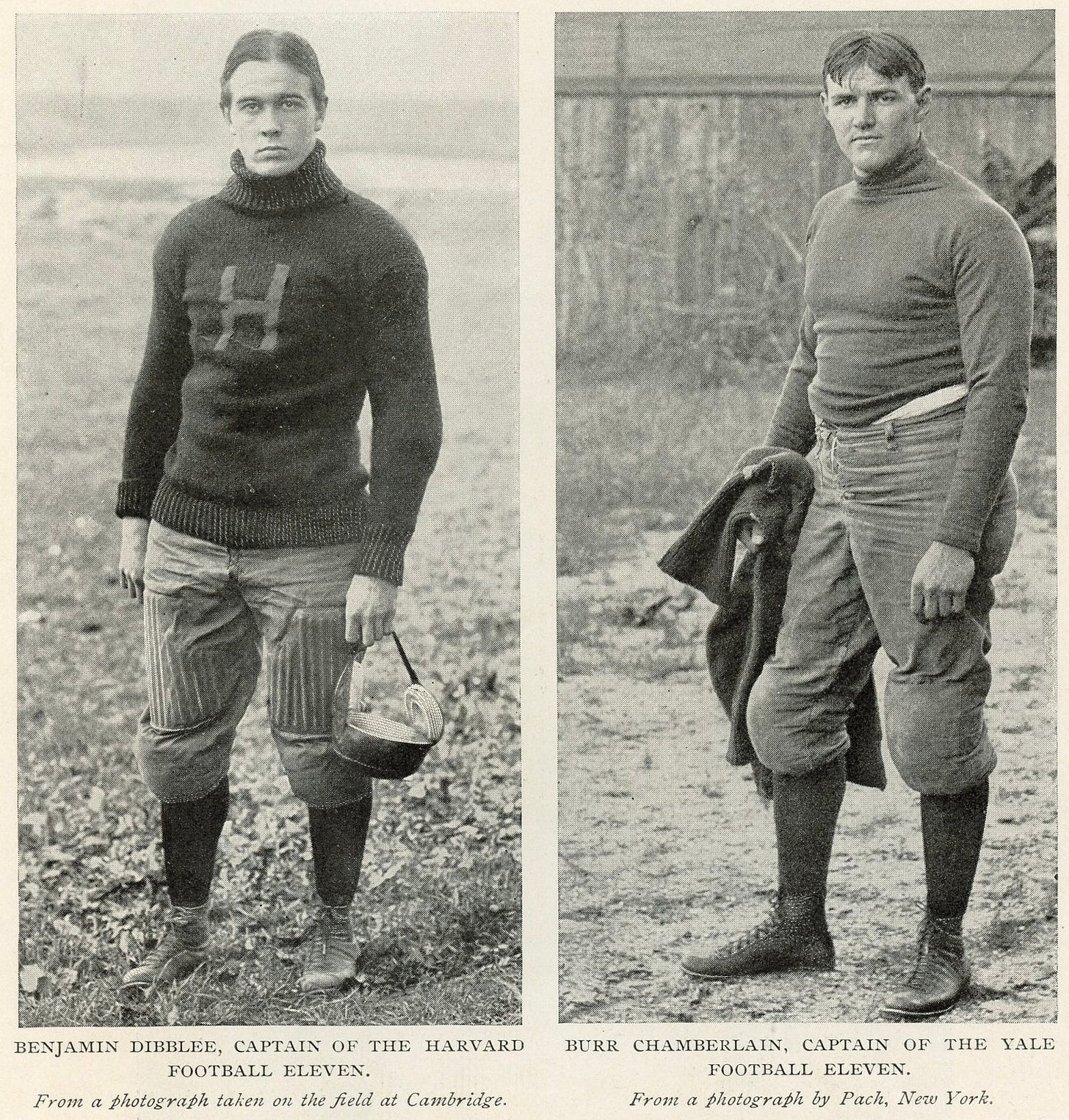Today's Tidbit... The Captains of 1898
Stories and images from an 1898 issue of Munsey's Magazine provide insight into football of the period. College football was at the height of celebrating itself as a game played by amateurs, gentlemen in every way, as it was dominated by elite schools in the East that formulated the game. Yes, folks played professionally here and there, but those games involved working men or former college players who should have known better.
Munsey's was a monthly with a circulation of 700,000 in the late 1890s. Most of its coverage focused on international and national events -such as the Spanish-American War- the stage, the arts, with a smattering of sports. Its layout was odd in that images related to an article might be printed several pages before the accompanying text, as occurred when they made the following observations about the game of football early in the 1898 season.
The interest in football this season has in no way diminished. The sport has extended to all sections of the country. Not a university or college, not a boys' school in the land, has not put its eleven on the field. Naturally a college game, one which by some right of inheritance seems to belong to college men, has had few followers among professional athletes. Its unquestioned amateur status, and its freedom from the evils of professionalism, are features that give it a peculiar prestige among sports.
At the time of this writing it is impossible to forecast the result of struggles between the teams of the great American universities. Harvard and Yale have not forgotten Princeton's victories, nor have Pennsylvania and Cornell ceased to realize that a single triumph over their great antagonists is an everlasting glory.
'In The Public Eye,' Munsey's Magazine, Vol 20, 1898.
In effect, Munsey's told its readers that only five schools were worth serious consideration, and two were the runts of the elite litter. Although retroactive shared championships were awarded to Rutgers' 1869 team (only they and Princeton played intercollegiate games) and Lafayette's 1896 team, Yale, Princeton, Harvard, and Penn earned all other championships to that point. So, they dominated the game on the field, as did their focus on amateurism.
The passage quoted above about football's glory appeared several pages after images of the five schools’ team captains, so let's look at each captain and how their team fared in 1898.
Coached by Pop Warner and captained by Allen Whiting, Cornell went 10-2 with losses to Princeton and Penn. They did not play Harvard or Yale. As described in a recent Tidbit, Whiting was the third player to execute the hidden ball trick when he did so in 1897, two years after John Heisman’s Auburn’s team pulled off the trick twice, the second time when playing Pop Warner’s Georgia team.
Princeton did not have a coach in 1898 and was led by captain Art Hillebrand. They finished 11-0-1, beating Cornell and Princeton by 6-0 scores, and were deemed to share the national championship. Following his playing days, Hillebrand coached Navy in 1901 and 1902 and Princeton from 1903 to 1905. He was elected to the College Football Hall of Fame as a player.
In his seventh season coaching Penn, George Woodruff was aided by team captain John Outland. They went 12-1, shutting out their first nine opponents while allowing Chicago, Carlisle, and Cornell to score and losing to Harvard 10-0. Outland played the sixth of his seven seasons in 1898 before coaching at four schools from 1900 to 1906. Later, as a practicing physician, he was heavily involved in Kansas athletics, founding the Kansas Relays and pushing for a Heisman-type award honoring the nation's best interior lineman, an award later named in his honor.
For the second time, Harvard's coach was William Cameron Forbes as Benjamin Dibblee captained the team. They went 11-0, claiming a share of the national title with a 10-0 win over Penn and a 17-0 victory over Yale. A two-time All-American, Dibblee coached Harvard in 1899 and 1900, going 20-1-1 with his 1899 team earning the national championship.
Frank Butterworth coached Yale for the second time, while Burr Chamberlain captained the team. They went 9-2, suffering a 6-0 loss to Yale and a 17-0 loss to Harvard. Chamberlain was a three-time All-American, coached Stanford in 1899 and Navy in 1903.
As top players on the country’s premier teams, Eastern football team captains were highly valued as coaches following their playing careers. Many did so only for a year or two before moving on to traditional careers while continuing to volunteer as assistant coaches with their alma maters or schools where they were located. Cornell coach Pop Warner, Penn’s George Woodruff, and Percy Haughton, who took over at Cornell in 1899 after Warner’s departure, were Eastern players who were among the first to professionalize the college coaching role.
Football Archaeology is reader-supported. Click here to buy one of my books or otherwise support the site.





There may have been a few exceptions along the way. There's a reason the smart Ivy Leaguers developed the SAT.
Like all men of the Ivy League, every one of these players was a true scholar-athlete!!!